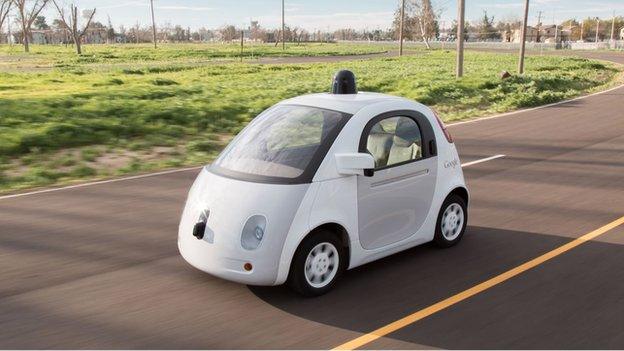Google partners Uber on driverless cars
- Published

Google wants self-drive cars with no steering wheels or pedals
Google has formed a coalition with carmakers and taxi-hailing companies to help steer the regulations needed to make self-drive cars a reality.
Including Ford, Volvo, Uber and Lyft, it will lobby lawmakers and regulators on some of the legal barriers.
Former US National Highway Traffic Safety Administration official David Strickland will be its spokesman.
The coalition also aims to convince the public of the benefits of driverless cars.
"Self-driving technology will enhance public safety and mobility for the elderly and disabled, reduce traffic congestion, improve environmental quality, and advance transportation efficiency," the group said in a statement.
China plans
Fully autonomous vehicles are not legal under current regulations, and California is considering barring self-drive cars that do not have:
steering wheels
pedals
a licensed driver who can take over in an emergency
Google has opposed the move and wants to avoid a patchwork of differing state regulations.
In a Senate hearing on autonomous vehicles, Google's self-driving cars chief, Chris Urmson, pointed out 23 states already had a total of 53 pieces of legislation related to the topic.
The NHTSA is due to release guidance on self-drive vehicles to states and policymakers in July.
In February, it said the system behind a self-driving Google car could be considered the driver under federal law, which was seen as a major step towards rubber-stamping fully autonomous vehicles.
Last year, there were 33,000 fatalities on American roads, according to the US Department of Transport.
Human error caused 94% of road accidents, and car crashes were the leading cause of death among 15- to 29-year-olds, it said.
In China, a university group backed by the Ministry of Industry and Information Technology is drawing up a plan for self-drive cars that could see autonomous vehicles on city streets within three to five years.
It will include technical standards, a common language for cars to communicate with each other as well as regulatory guidelines.
- Published29 February 2016
- Published15 March 2016

- Published10 February 2016